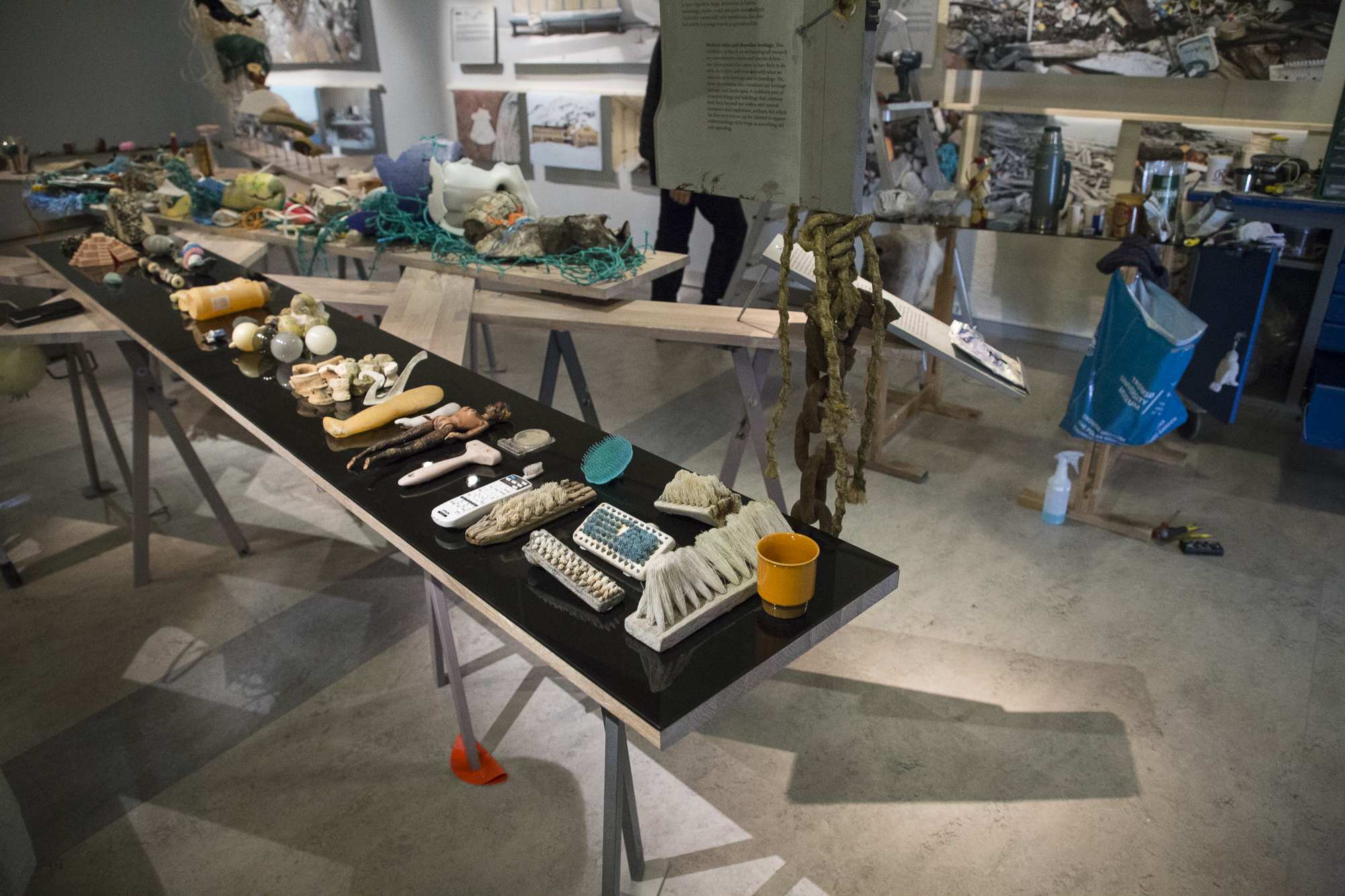'Arv': Mankind's Unpleasant Cultural Heritage

A paintbrush with its bristles sanded down. A faceless doll. A ketchup bottle bleached by the sun.
A casual onlooker stumbling upon these items washed up on a beach would probably think ‘trash’ and spare them no further thought. But carefully arranged at Tromsø Museum – Universitetsmuseet alongside heaps of other marine debris, as well as images of abandoned coastal settlements, the items take on a new meaning.
‘As the title suggests, this research project places at the centre the matter that surrounds us and the objects that we shape,’ said Professor Vigdis Broch-Due, scientific director of CAS, who opened the exhibition on March 22. While scholars have written ‘volumes’ about the symbolic and economic value of things, she said, the fundamental ‘materiality’ remains a largely unexplored topic.
‘It is exactly this quiet, enduring “thing-ness” that the research behind this exhibition challenges and creates a theoretical framework for,’ Broch-Due said. ‘I’m sure it will spark debate and leave a lasting impression.’
‘Arv’ is also a celebration of both CAS, UiT, and the partnership between the two institutions. CAS is celebrating its 25th anniversary during the 2017/18 academic year, while UiT turns 50 in 2018.
‘Things are back’
‘Things are back,’ Olsen wrote in the project abstract. ‘After a century of neglect, and after decades of linguistic and textual turns, there has for a while been much buzz about a material twist in the humanities and social sciences: a (re)turn to things.… By bringing a concern with ruins and things themselves to the forefront, this project aims to develop a new platform for debating archaeology and heritage in the 21st century.’
Broadly speaking, the group members, who continue to work together today as part of the larger UiT-funded project Unruly Heritage, are studying the Anthropocene. The term refers to the proposed current geologic time period, its defining trait being human impact on the planet.
‘This exhibition explores how mankind has influenced the Earth’s geological and ecological development,’ Broch-Due said. ‘Our footprints and our things press down on the Earth’s crust, breaking it apart and mixing it together to form new objects.’
For more information about Olsen and Pétursdóttir’s work, read this article in Labyrint, the official research magazine of UiT, and see the links in the sidebar.
Confronted by the past
The exhibition blurs the lines between the natural and unnatural. On one end of the exhibition, marine debris lies neatly organised on makeshift tables -- here’s a collection of buttons; there’s a display of hard plastic, sanded down by the elements to resemble seaglass. On the other end, manmade and natural materials are fused together into lumps of ‘plastiglomerate,’ a term proposed by scholars to describe a type of stone consisting partly of plastic.
Bathed in the purplish neon light of their display cases, the hunks of plastiglomerate take on an almost alien quality, challenging the onlooker to consider the ways that mankind is altering the planet.
The exhibition is flanked by still and moving images captured by the scholars during field work in remote, abandoned settlements in coastal Iceland, Norway, and Russia. In one corner, a looping video shot inside a derelict building plays, showing snowflakes whirling into a stairwell through a shattered window.
The images tell a story about plans for prosperity gone wrong. In Dalniye Zelensy, Russia, in the mid-20th century, a small community formed around the Murmansk Marine Biological Institute’s research station there. But after the research station ceased to operate in the 1990s, the community began to dwindle. Today, it is abandoned.
Eyri, Iceland suffered a similar fate. In the 1940s, one of the country’s largest herring factories opened its doors. Less than a decade later, in 1952, it closed down. The factory’s concrete skeleton remains there today, jutting out into the Ingólfsfjörður.
‘When we think of our cultural heritage, we tend to think of stave churches and viking ships -- things that are old, treasured, and worth of preservation,’ Broch-Due said. ‘But what about the cultural heritage that’s all around us: floating islands of garbage, rundown factories, abandoned settlements, nuclear waste, and pollutants. Is that heritage as enjoyable?’
‘Arv’ will run at Tromsø Museum until October 2, after which it is expected to travel to other museums in the Arctic.